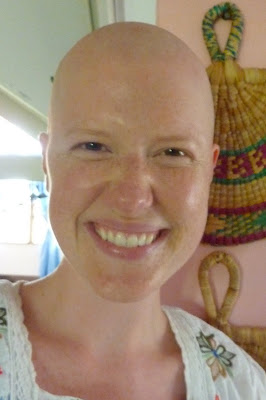A Blessed Visit from my Dear Friend, Danielle
One of the greatest joys in life is a visit from an old friend. When planning my trip to Senegal, I learned that one of my dear high school friends, Danielle Mode, (http://africameetsdanielle.blogspot.com) intended to volunteer as a nurse in the course of that same period. I decided that I would not return to the States for Christmas in order to spend the holidays with one another. Arriving in the afternoon of the 28th of December, I had a packed schedule organized for her six-day vacation in Senegal. After four months of gallivanting around this lovely country, especially the Dakar environs, I have become quite familiar with its regions. With this six-day time constraint, I chose a diverse grouping of landscapes close to Pikine, Dakar: the ocean (Somone), the city (Dakar and some of its jewels), and the countryside (Taiba Ndiaye). Our adventurous spirits melded well together as we traipsed across a country I have come to cherish.
The Ocean: Somone
Back in October, as you might remember, I stayed with a welcoming family in the tranquil beachside town of Somone. I knew that this village would be a perfect place to bring Danielle since it contained the beauty of nature and human hospitality. Fortunately, there was an extra room in the house where my host family rents space, which is where they set us up complete with a plastic carpet to cover the cement floor and a foam mattress for sleeping. Quiet and unassuming, we ate with the family and walked for hours along the beach and in the mangrove preserve. Surprisingly chilly with an extensive amount of wind, Danielle froze with the change in temperature from hot and humid Sierra Leone and Ghana. It is amazing how much it has cooled off here in Senegal!
The City: Dakar and its colonial and modern jewels
Even though Dakar is a headache of a city with its traffic jams and garbage-strewn streets, there are some pleasing sights to visit, including the Presidential Palace, Independent Square, Gorée Island, Obelisk Square, and the old train station. In an attempt to show Danielle the streets of Dakar, I decided that we would walk from Independence Square to Liberté 6, about six miles away. As usual, I had no idea where to go, but I figured we would keep asking people along the way; however, we met a Baye Fall (a Muslim Rasta) who offered to guide us to our destination. Pushing our way through crowds of New Year’s Eve revelers and following this Baye Fall for two hours, we weaved in and out of darkened streets.
Blessings from God come in all shapes and sizes, even in the form of a sauntering, dread-locked wanderer. (Baye Falls spend most of their time begging for their religious leaders and meandering around town.) Our long walk ended with taking a taxi to Obelisk Square, where firecrackers and roman candles electrified our New Year’s celebration. Fireworks were in the sky and on the ground, as if the crowd was one massive explosive. Quite memorable!
Accompanied by one of my brothers, we went to Gorée Island on New Year’s Day, which is a UNESCO World Heritage Sight, preserving the history of the slave trade and memorializing the lives of all the slaves who died and passed through this hauntingly beautiful landmark.
The Countryside: Taiba Ndiaye
On a normal day, exiting Dakar is a strenuous affair due to traffic and general transport conditions; however, getting out of Dakar on the day of a national strike is nearly impossible. Lucky us, Danielle and I experienced the shutdown of all public transport. Buses, vans and even taxis were dry-docked on the side of the road, protesting high gas prices and lack of proper remuneration policies for transport employees. I was not about to let a strike stop me from completing my itinerary, so one of my brothers dropped us off in Thiaroye, where the possibility of getting a shared car or a kind passerby was pretty high. Finally we got a car to take us to Thies and from Thies we hired a taxi to take us to Tivaouane, about 8 miles from Taiba. I told Danielle that from Tivaoane, we could walk to Taiba, and that is what we started to do.
As we were walking along, a man in an SUV stopped and honked and spoke to us in English, offering to give us a ride. What a blessing! Whenever I take the first step in faith, God fills in the rest. I was so content to be in Taiba even though we ended up spending triple the price to get there. We walked through the village, stopping to talk to people who were curious about the two “Tubabs,” and enjoying the mild weather. The next morning after some coffee and peanut butter chocolate sandwiches, we hopped on a donkey cart to out to the fields. This donkey was slower than molasses in winter! We met women along the way who easily passed us, even with buckets on their heads! Oh, well, the experience is what mattered, and riding on a donkey cart is certainly something every person should try on his/her visit to the Land of Teranga.
Tip #9 for Surviving in Senegal: When Senegalese public transport goes on strike, be prepared to walk! Gas prices are extremely high in Senegal, especially compared to the average salary earned, that transport employees find it difficult to make a profit. As much as I support their desire to reduce gas prices and gain better working conditions, the strikes affected only the working population—those who depend on public transport to go to work. Apparently, they received an increase of 6% in wages from the government, but gas prices were not reduced. They plan on striking again in a couple of weeks. I’ll be ready with my walking shoes!












Comments